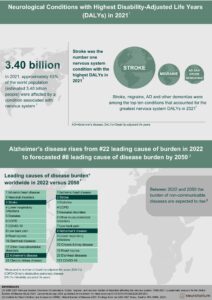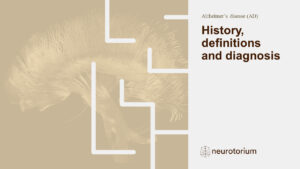The staging method developed by Braak and Braak suggests that the neurofibrillary pathology of AD progresses in a relatively predictable sequence across the medial temporal lobe structures, subcortical nuclei, and neocortical areas of the brain in seven stages, with the final stage representing the presence of cortical neurofibrillary changes.
Read more about how Braak’s neurofibrillary pathology correlates with cognitive impairment





